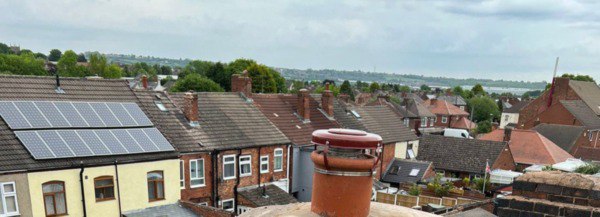Navigating the Terrain: Exploring the Pros and Cons of Flat Roofing
Introduction: When it comes to roofing options, flat roofs offer a distinct set of advantages and challenges compared to traditional pitched roofs. Understanding the pros and cons of flat roofing is essential for property owners considering this option for their homes or commercial buildings. In this blog post, we’ll delve into the benefits and drawbacks of flat roofing to help you decide whether it’s the right choice for your needs.
Pros of Flat Roofing:
- Affordability: Flat roofing systems typically require fewer materials and less labour than pitched roofs, making them a cost-effective option for budget-conscious property owners.
- Space Utilisation: The flat surface of a flat roof provides additional usable space, allowing for the installation of rooftop gardens, solar panels, HVAC units, or outdoor recreational areas.
- Accessibility: Flat roofs are easier to access and maintain than pitched roofs, as there are no steep slopes or complicated angles to navigate during inspections, repairs, or installations.
- Modern Aesthetics: Flat roofs offer a sleek, contemporary look that complements modern architectural styles and can enhance the overall aesthetic appeal of a building.
- Energy Efficiency: Flat roofs can be designed with added insulation and reflective coatings to improve energy efficiency and reduce heating and cooling costs.
- Installation Flexibility: Flat roofing systems can accommodate a variety of roofing materials, including built-up roofing (BUR), single-ply membranes, and modified bitumen, providing flexibility in design and performance.
Cons of Flat Roofing:
- Drainage Issues: Flat roofs are prone to water ponding, leading to leaks, structural damage, and premature deterioration if not properly addressed with adequate drainage systems.
- Maintenance Requirements: Flat roofs require regular maintenance to prevent debris buildup, ensure proper drainage, and address potential issues such as membrane damage or sealant failure.
- Limited Lifespan: Flat roofing materials may have a shorter lifespan than pitched roofs, as they are more susceptible to wear and tear from UV exposure, weathering, and foot traffic.
- Weather Vulnerability: Flat roofs are more prone to damage from extreme weather conditions such as heavy rain, snow accumulation, and high winds, which can increase the risk of leaks and structural issues.
- Insulation Challenges: Flat roofs may require additional insulation to prevent heat loss in colder climates and minimise heat gain in warmer climates, adding to the overall cost and complexity of the roofing system.
- Potential for Leaks: Flat roofs have a higher risk of developing leaks due to their low slope and susceptibility to water ponding, requiring diligent maintenance and prompt repairs to prevent water infiltration.
Conclusion: Flat roofing offers a range of benefits, including affordability, space utilisation, and accessibility, making it a popular choice for residential and commercial properties. However, when installing a flat roof, it’s essential to consider the potential drawbacks, such as drainage issues, maintenance requirements, and weather vulnerability. By understanding the pros and cons of flat roofing, property owners can make informed choices that meet their durability, functionality, and aesthetics needs.
Call us on: 01924 927 094
Click here to find out more about KJ Roofing Crofton
Click here to complete our contact form and see how we can help with your roofing needs.

